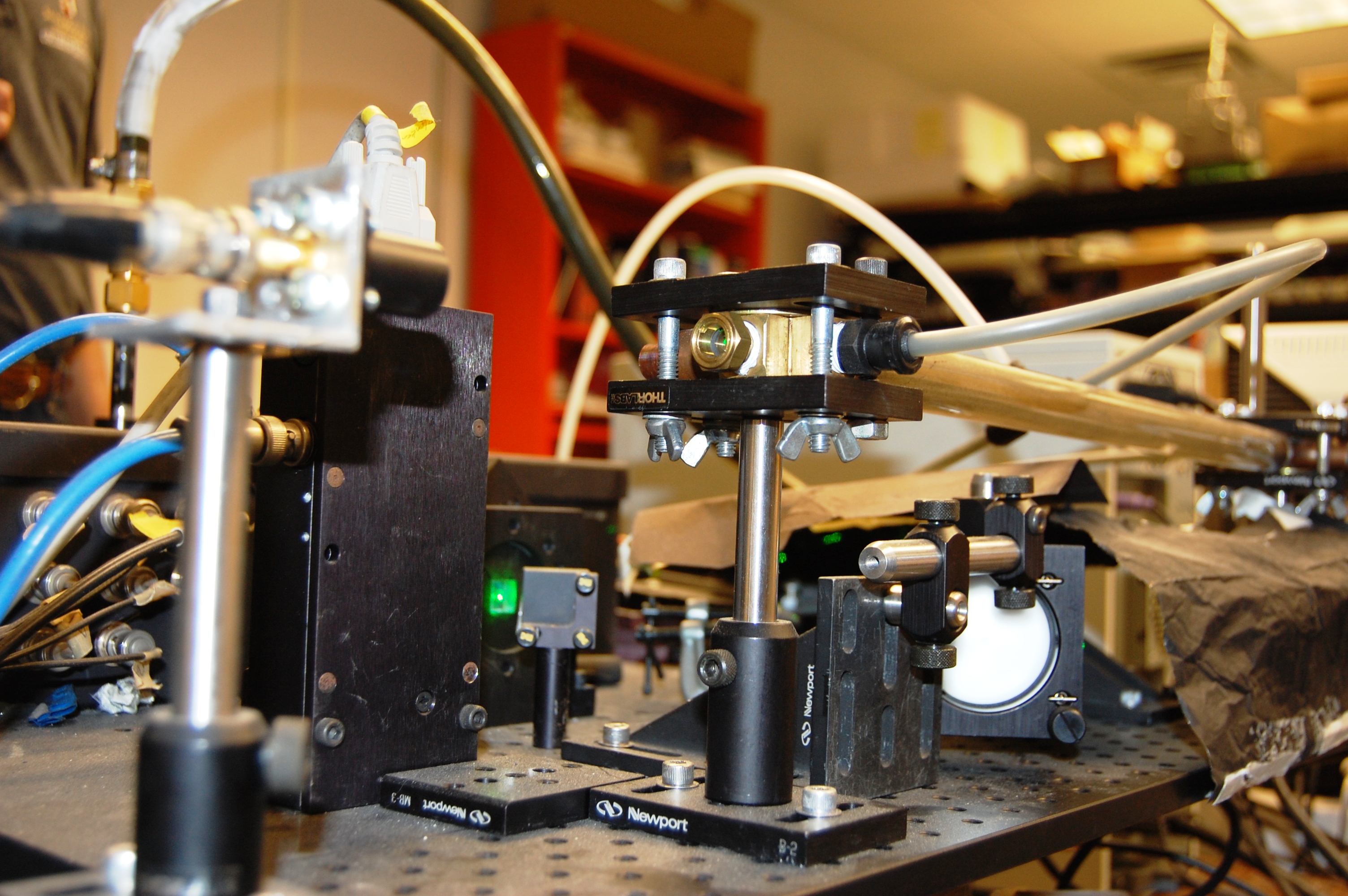Getting Out of Hot Water
SDSU engineering professor Fletcher Miller believes using air instead of water will make solar power production more efficient.

While solar thermal power is an excellent alternative to using fossil fuels and way to reduce greenhouse gas emissions, its current form actually strains another natural resource — water.
Most solar thermal plants, which typically reside in the middle of the desert, where the sun is ample and the heat is sometimes unbearable, actually rely on water as part of the power generation cycle.
Fletcher Miller believes he has a solution that will not only dramatically reduce the need for water, but will make the production of solar power more efficient, thereby reducing land use as well.
Using air instead of water
With the aid of three separate grants, including one from Google.org’s research program, Develop Renewable Energy Cheaper Than Coal (RE < C), Miller and a team of San Diego State engineering and physics students are working to create a new way to use air instead of water as the motive fluid in power generation.
In a solar plant, the receiver is a vessel on the top of a tower that “receives” the concentrated sun light from the field of mirrors directed at it. In turn, the receiver heats a pressurized fluid that is used to drive a turbine, generating electricity. All commercial solar thermal plants today rely on a steam turbine, which often consumes a large volume of water to cool the output.
“Steam is created, that goes through a steam turbine that’s sitting on the ground,” said Miller, a professor of mechanical engineering at SDSU. “But when it’s finished going through the steam turbine you have to recondense the steam back into water. That’s where all the cooling water comes from. And it isn’t anything to do with solar energy, it’s just a part of a steam cycle power plant. Nuclear and coal plants have this need also, but they are not normally located in the desert.”
“These solar plants are competing for water. They’re competing against farmers. They’re competing against us (in southern California).”
Scarce groundwater must be used, or water imported to these desert locations, to effect the cooling needed for this process. The more solar plants that are built, the more water will be needed.
“These solar plants are competing for water,” Miller said, noting that while air cooling is possible, it reduces the efficiency of the plant. “They’re competing against farmers. They’re competing against us (in southern California).”
The SDSU solution
For the past two years, Miller has been designing a gas turbine cycle that heats air, rather than water, to drive the turbine, a process similar to the power cycle used in aircraft engines. Heating air in the desert would seem a simple task. But Miller likens the challenge to that of cooking a potato quickly.
“In a regular convection oven which heats the surface, the outer layer cooks first, and the inside takes a long time to get warm,” he said, comparing that process to heating air inside tubes. “But in a microwave, you have volumetric absorption. That is, it the entire potato heats at the same time. That is the process we are trying to emulate in our solar receiver.”
Miller and his team are designing a receiver that heats the air throughout the volume, rather than just at the surface of a pipe, as is done in traditional steam or even new air receivers.
Miller is quick to note that many of his students are playing a key role in this research, including Kyle Kitzmiller, Paul Schroeder, Adam Crocker, Onkar Mande, Mugdha Dokhale, Ioana Broome, Brian Gehring, and Emily Mitchell, all of whom are doing theses on this project.
“The students have been great to work with and really are responsible for the progress, as they are dedicated to helping pioneer new energy solutions,” Miller said.
In the design of the receiver, which Miller worked on as a doctoral student with the originator, Arlon Hunt from Berkeley, a window is applied to the front of the receiver, and carbon nano particles are released into the air inside the receiver. The carbon nano particles absorb the sunlight and quickly transfer that energy to the surrounding gas much more effectively than a solid surface would. The particles then burn up in the hot gas, which is used to drive the turbine.
Two more grants
The RE<C grant was for the design of the concept, which should be completed by the end of the year. Two additional grants will help Miller develop and test a prototype.
The California Energy Commission has given Miller a grant to build a solar simulator and a lab-scale receiver to simulate process in the laboratory. Specifically, the research will focus on how to operate the receiver in the event of inevitable cloudy periods when the sunlight alone is not sufficient to drive the turbine and some short-term back up is needed.
Sandia National Labs’ grant is for the study of longer-term back up, also known as thermal storage, that will allow this and other solar plants to operate in the evening or even at night, until they can be recharged again the next day.
In the race to improve the efficiency of solar plants, SDSU’s team isn’t alone.
“There are several different competing designs out there, which makes the race exciting,” Miller said. “None of them are commercial at this point. They’re all in the test design phase. We think we’ve got a good solution to this problem.”
Getting out of Hot Water



